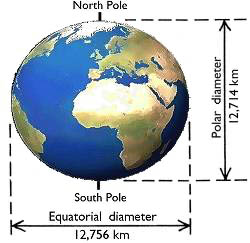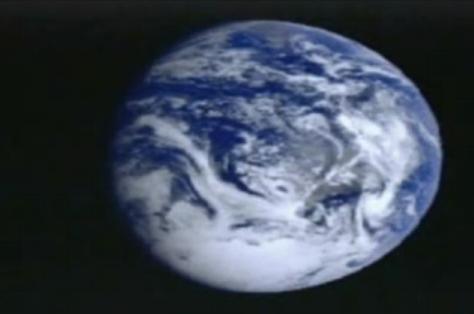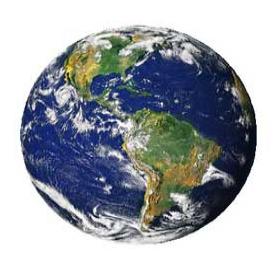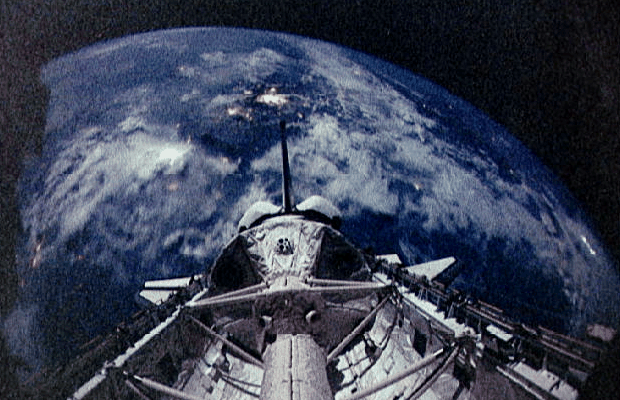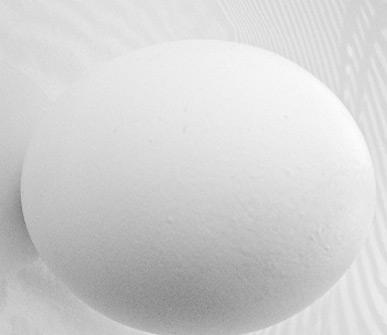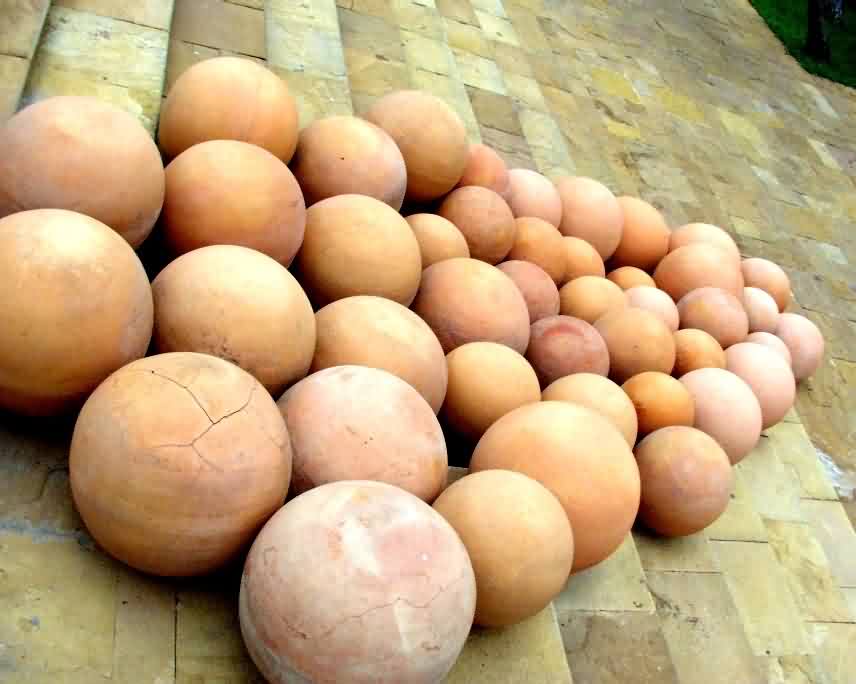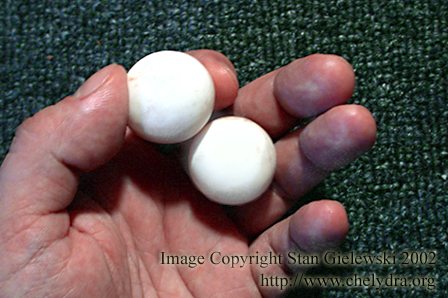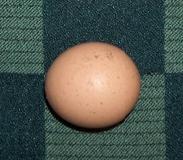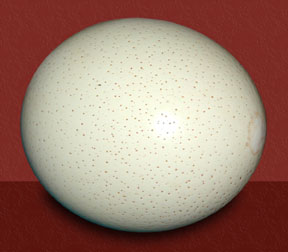Al-Jazeerah
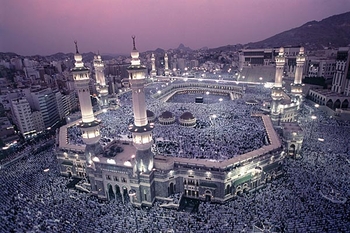 |
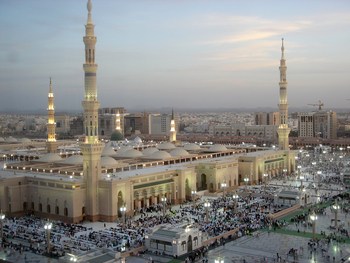 |
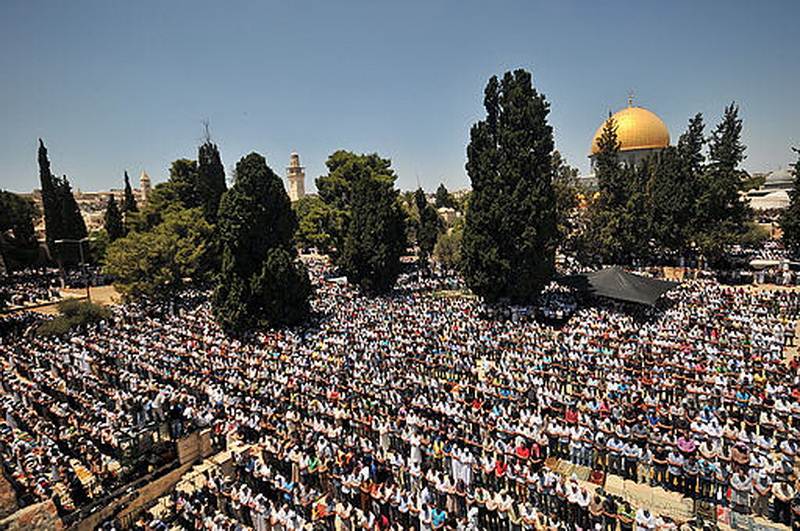 |
| Al-Haram Mosque in Makkah | The Prophet's Mosque in Madinah . | Al-Aqsa Mosque Compound in Jerusalem |
Islam: A Scientific View of God's Message to Humanity
By Hassan Ali El-Najjar
Table of Contents
I. Introduction:
Basic Information
1.
Islam: A Brief Introduction
2.
Three Levels of Faith: Islam, Iman, and Ihsan
3.
The Scientific Evidence That God Exists and the Holy Qur'an Is His Message
to Humanity
4.
Creation and Evolution in the Holy Qur'an
5.
Humans, As God's Caliphs on Earth
6.
Adam's Contest With the Angels, and Getting Out of Paradise
7.
Worshippers By Choice Or Forced Slaves?
8.
The Relationship Between the Spiritual and the Physical
Aspects of Islamic Teachings
9.
Spirit, Soul, Mind, Self, Spirit, and Happiness from an Islamic Perspective
10.
Heart-Mind Relationship in the Holy Qur'an
II. Islam: The
Five Pillars of the Faith Structure
1.
Islamic Proclamation of Faith
3. Giving
Zakat, Charity, The Third Islamic Duty
4.
Fasting and Ramadhan, Great Gifts from Allah to Muslims
III. Iman:
Allah, His Angels, Messengers, Messages, Latter Day, and Qadar
1.
Allah, As He Described Himself in the Holy Quran
2.
Angels
3.
Noo'h, Noah, in the Holy Quran
6.
'Eissa, Jesus Christ, in the Holy Quran
8.
Prophet Muhammed's Night Journey and Ascent to Heavens, Al-Issra Wal Mi'raj
9. The Last Day, The Hour, Resurrection, Reckoning, and Judgment
10. God's Precise Measurement and His Just Decree, Al-Qadar Wal Qadha
IV. I'hsan:
Watching Allah in What We Say and What We Do
2. The La (No) Commands
3. The Imperative Commands
***
Articles with Islamic
Perspective:
Health Care Crisis in
the US: An Islamic Perspective
"Terrorism" & "Islamo-Fascism"
Propaganda Campaigns:
An Interactive
Lecture
Six Questions About
Islam, Muslims and Jews
Food Islamic Rules
and Teachings
Are Muslim women
second-class citizens
The French Ban on
Islamic Headscarf, an Interview with
Links to Islamic Topics 2007-2010
Islam:
A Scientific View of God's Message to Humanity
4
Creation and Evolution in the Holy Quran
By Hassan Ali El-Najjar
Updated on the 28th of Shawwal, 1441 Hijriya - June 20th, 2020
***
الْخَلْقُ وَالتَّطَوُّرُ فِي الْقُرْآنِ الْكَرِيمِ
تأليف حسن علي النجار
***
I seek refuge with God from the
Stoned Shaytan
In the name of Allah, the
Beneficent, the Merciful
Introduction
Through the meanings of the first ten Quran verses addressed in Chapter 3 of this book, we saw how Allah (God) started the creation of the universe, including the seven heavens and the seven earth-like planets, as well as the intelligent beings living in them. This Chapter focuses on the themes of creation and evolution, by addressing how Allah started the creation of life on Earth and how He left it to evolve as a result of learning from adaptation to the various environments, with His intervention to improve His creation.
In particular, the creation and evolution of human beings will be addressed through the discussion of the following 43 verses, which the author identified in the Holy Quran and presented in a suggested order of creation and evolution.
Meanings of these verses are explained by consulting with the three renowned interpreters of the Holy Quran (Al-Tabari, Al-Qurtubi, and Ibn Katheer). Then, the meanings are compared with the scientific evidence, particularly from anthropology, biology, and cosmology. The objective is to tell the story of God's creation of life and how it evolved on Planet Earth, not only by using the linguistic meanings of the verses but also by using the relevant scientific facts.
From the meanings of these verses, researchers can find support for the evolutionary theory, which dominates all natural sciences. Moreover, the scientific facts included in these verses represent further pieces of evidence that the author of the Holy Quran is Allah, the All Knowledgeable, as humans did not know these facts until the establishment of modern sciences, during the second half of the 19th Century.
43 Verses Telling the Story of Creation and Evolution in the Holy Quran
1-2.
Do they not see how Allah begins the Creation, then repeats it? That is easy for Allah (to do) (Al-'Ankaboot, 29: 19).
Say: "Travel through the Earth and see how He began the Creation. Then, Allah makes the latter Creation. Allah is capable of (doing) everything" (Al-'Ankaboot, 29: 20).
أفَعَيِينَا بِٱلۡخَلۡقِ ٱلۡأَوَّلِۚ بَلۡ هُمۡ فِى لَبۡسٍ۬ مِّنۡ خَلۡقٍ۬ جَدِيد (قاف ، 50: 15).
Were We then tired with the first creation? (No), they (nonbelievers) are in confusion about a new creation (Qaf, 50: 15).
4. Verse 21: 30 tells us that the heavens and the Earth were joined together as one entity before they were splintered, and that every living thing was made out of water.
أَوَلَمْ يَرَ الَّذِينَ كَفَرُوا أَنَّ السَّمَاوَاتِ وَالأَرْضَ كَانَتَا رَتْقاً فَفَتَقْنَاهُمَا وَجَعَلْنَا مِنَ الْمَاء كُلَّ شَيْءٍ حَيٍّ أَفَلا يُؤْمِنُونَ (الأنبياء ، 21: 30).
Have not those who disbelieve seen (known) that the heavens and the Earth were of one connected entity, then We splintered (separated) them, and We made every living thing out of water? Will they not then believe? (Al-Anbiya', 21: 30).
This
verse is a source of support for scientists who have reached the established biological fact that water is necessary for any life
form.
For
decades, space programs have had a major goal of investigating whether there
is water on other planets or not, in order to begin the exploration of
whether there is life on those planets or not. This Verse and several other verses
in the Holy
Quran have stated clearly that every living being has been created from
water.
Water covers about seventy percent of the surface of the Earth, which has provided it with the essential requirement of life. We know now the components of cells in primitive unicellular organisms. However, scientists do not know how life started in the first cell, and they have never been able to create life in a cell.
This Verse tells us that it is God, Who created living beings out of water. As we learn from the verses addressed below, He did that by blowing of His Spirit into the first cell, creating life in it, which became the primary software or DNA of living things.
5. Verse 20: 30 tells us that the first creation of life on Earth was out of earth matter (dirt or soil), in addition to water, as mentioned in Verse 21: 30 above.
وَمِنْ آيَاتِهِ أَنْ خَلَقَكُم مِّن تُرَابٍ ثُمَّ إِذَا أَنتُم بَشَرٌ تَنتَشِرُونَ" (الروم ، 30: 20).
And of His signs is that He created you from the earth matter (dirt or soil).Then, you became humans spreading (throughout the Earth) (Al-Room, 30: 20).
Water is the first condition for life to exist but this Verse tells us that the earth matter was the other condition for the human life to exist. The most relevant word in this verse is "turab," which is the earth matter that can be translated into dirt or soil. The same word is also mentioned in five other verses in relation to the first creation of life on Earth. [1]
6. Verse 32: 7 tells us that the first creation of life was in clay, which is a combination of water and earth matter (dust or soil).
الَّذِي
أَحْسَنَ كُلَّ شَيْءٍ خَلَقَهُ وَبَدَأَ خَلْقَ الإنْسَانِ مِنْ طِينٍ
(Allah is
He) who has made everything He created better, and He began the creation of
the human (being) out of clay (Al-Sajda, 32: 7).
In this verse, we are told that the first creation of human beings was out of clay, but that was the beginning. The most relevant word in this verse is "began" (bada-a), which tells us clearly that the creation happened in a process that had a beginning. It did not happen at once.
Water is the basic condition for life to exist, as we know from Verse 21: 30, mentioned above, but in Verse 30: 20, the earth matter (dust or soil) is added as a second condition. In this Verse (32: 7), we learn that the first creation of life was in clay, which is a confirmation for the previously-mentioned two verses, as clay is the combination of water and earth matter (dust or soil). This is also what we know from the scientific evidence available to us today, as there is a wide agreement among scientists that the beginning of life was in clay, which is basically composed of water and earth matter (dust or soil). [2]
فَاسْتَفْتِهِمْ أَهُمْ أَشَدُّ خَلْقًا أَم مَّنْ خَلَقْنَا ۚ إِنَّا
خَلَقْنَاهُم مِّن طِينٍ لَّازِبٍ (الصافات ، 37: 11).
Then, (O Muhammad) inquire of them (the Makkan nonbelievers), "Are they a stronger creation (than others) We have created?" Indeed, We created them from sticky clay (Al-Saffat, 3711).
The three renowned interpreters of the Holy Quran agreed on the meaning of the word "lazib," in the verse, as sticky. Thus, the first creation of life began in sticky clay. Its molecules were sticky to each other and it would stick to anything that touched it.
8. Verse 15: 26 provides another description of the clay used in the first creation of life, mentioning that it was dry clay with a stinking smell.
We created the human being from dry clay, molded of blackened (and) stinking mud (Al-'Hijr, 15: 26).
This
verse gives a very specific description of the environment where life
started. It refers to places, where water was combined with the earth matter
(dust or
soil), creating stinking clay.
9. Verse 55: 14 confirms that the clay of the first creation was dry, like pottery.
خَلَقَ الإِنسَانَ مِن صَلْصَالٍ كَالْفَخَّارِ
He created the human (being) of a hard clay, like pottery (Al-Ra'hman, 55: 14).
This Verse (55: 14) tells us that the clay, which was used for the first creation of life, was dry, like pottery, confirming what was mentioned in Verse 15: 26 above. However, when such dry clay was moistened with water, it became suitable for the start of life in it, as water is the first condition for life to exist (21: 30).
وَقَدۡ خَلَقَكُمۡ
أَطۡوَارًا
(نوح
، 71: 14).
He has created you in diverse (and successive) stages (Noo'h, 71: 14).
From the following verses, we learn that there are two creations. The first one was in nature, which included five stages. These are starting life in the cell, fashioning humans in the right proportions, walking on two legs, imaging, and blowing of God's Spirit. The second creation is in the womb, which also includes five stages. These are the fertilized egg (zygote), leech, lump (like a chewed substance), bones, and muscles, as will be discussed later in Verse 23: 14 below.
11. Verse 6: 2 tells us that after Allah had created life in clay, He willed to leave His creation on its own, for a certain time He determined.
هُوَ
الَّذِي خَلَقَكُم مِّن طِينٍ ثُمَّ قَضَى أَجَلاً وَأَجَلٌ مُّسمًّى عِندَهُ
ثُمَّ أَنتُمْ تَمْتَرُونَ
He is Who created you from clay, then He spent a term of time (away from you), and (it is) a specific term He determined. Yet, you doubt (His ability) (Al-An'am, 6: 2)!.
Scientists generally, and biologists and anthropologists in particular, can have support from this Verse, as well as from the following verses, for their evolutionary explanation of how different species evolved on Earth, on their own, in specific periods of time, when Allah, praise to Him, determined to spend some time away from His creation.
Thus, this Verse summarizes the two concepts of creation and evolution. While creation refers to God's intervention, making changes and improvements on His creation, evolution refers to the changes which happen to organisms as a result of their interaction and adaptation to their physical and social environment. This is also the essence of the evolutionary theory, which dominates all natural sciences.
12. Verse 4: 1 tells us that at the start of the first creation, there was only one living self (unicellular organism). Then, another self (cell) came out of it, to become its mate. The Verse also tells us that these two primary cells were the origins of the second creation of men and women (in the womb).
يَا أَيُّهَا النَّاسُ اتَّقُواْ رَبَّكُمُ الَّذِي خَلَقَكُم مِّن
نَّفْسٍ وَاحِدَةٍ وَخَلَقَ مِنْهَا زَوْجَهَا وَبَثَّ مِنْهُمَا رِجَالاً
كَثِيراً وَنِسَاء (النساء ،
4: 1).
O humans!
Biological science tells us that the earliest form of life
was represented by single cell organisms found in water, then these
multiplied by splitting themselves. With the course of time, reproduction
evolved to become as a result of pair-mating, instead of the archaic forms of splitting or
dividing.
13. Verse 82: 7 mentions the first three stages of the first creation. These are starting life in the first cell, fashioning with the right proportions, and walking upright on two legs.
الَّذِي خَلَقَكَ فَسَوَّاكَ فَعَدَلَكَ
(الإنفطار ، 82: 7).
It is He Who created you, fashioned you with the right proportions, and straightened you up (Al-Infitar, 82: 7).
14. Verse 64: 3 refers to a fourth main stage of the first creation of life on Earth, which is humans in the best of images.
خَلَقَ السَّمَاوَاتِ وَالْأَرْضَ بِالْحَقِّ وَصَوَّرَكُمْ فَأَحْسَنَ صُوَرَكُمْ ۖ وَإِلَيْهِ الْمَصِيرُ (التغابن ، 64: 3).
He created the heavens and the Earth in truth and imaged you in the best of images, and to Him is the (final) destination (Al-Taghabun, 64: 3).
In this four
15. Verse 82: 8 tells us that the genetic structure of the human child represents that which is shared with humanity and before.
فِي أَيِّ صُورَةٍ مَّا شَاء رَكَّبَكَ
(ألإنفطار
، 82: 8).
In whatever image (form) He willed, He assembled you (Al-Infitar, 82: 8).
In explaining this verse, Al-Tabari and Ibn Katheer mentioned the Prophet's 'Hadith, in which he said, "When the fertilized egg settles in the womb, Allah connects it genetically to Adam." Al-Qurtubi agreed with them, in that the human fetus may reflect characteristics and features of relatives and non-relatives, and even features of animals.
So, despite the fact that people may differ in their external features, such as their height, weight, skin color, and facial feature, yet they carry the same genetic heritage they share with other humans, since the first creation, all the way to Adam, and their parents. Most likely, people may look like their parents and close relatives but it is possible that they may differ from them. Some people may even have some features of animals, such as in the shape of their ears, noses, mouths, chins, necks, and eyes.
16.
Verse 15: 29 refers to a fifth main stage in the first creation of
life on Earth, which was
فَإِذَا سَوَّيْتُهُ وَنَفَخْتُ فِيهِ مِن رُّوحِي فَقَعُوا لَهُ سَاجِدِينَ (الحجر ، 15: 29).
And when I have proportioned him and blown into him of My Spirit, then fall down to him in prostration (Al-'Hijr, 15: 29 ; Sad, 38: 72).
This Verse, which was also repeated in 38: 72, shows that blowing God's Spirit was the fifth stage of the first creation, which preceded God's command for angels to prostate to Adam. The evidence for this conclusion is the use of the conjunctive letter f (fa), which refers to direct temporal sequence of events, without delay. In comparison with Verse 7: 11, the command of prostration came with the use of the conjunctive word "thumma," which means then and refers to a delayed temporal sequence of events.
Concerning God's Spirit, which was blown into humans, we know little about that, as Verse 17: 85 tells us. However, there is a slight discussion about God's Spirit in Chapter 9 of this book, "Mind, Self, Spirit, Soul, and Happiness."
Blowing God's Spirit in humans, in the fifth stage of the first
creation, distinguished them from animals and honored them,
17-20. Verse 7: 11 refers to God's command to angels, to prostrate to Adam, as a sign to honor humans and in recognition to their intellectual capabilities.
وَلَقَدْ خَلَقْنَاكُمْ ثُمَّ صَوَّرْنَاكُمْ ثُمَّ قُلْنَا لِلْمَلآئِكَةِ
اسْجُدُواْ لآدَمَ فَسَجَدُواْ إِلاَّ إِبْلِيسَ لَمْ يَكُن مِّنَ
السَّاجِدِينَ (ألأعراف
، 7: 11).
And We created you (humans, in plural form), then imaged you (also addressing humans in plural form), then said to the angels: Prostrate to Adam! And they prostrated, all except Iblis (Satan), who was not of those who made prostration (Al-A'raf, 7: 11).
This Verse refers to the greatest event in the history of humanity, which was also mentioned in Verse 15: 29 above. In comparison with other species on Earth, humans reached a high level of intellect and morality, which qualified them for the honor of receiving communication from their Creator, who decided to make them His caliphs (deputies) on Earth.
The high level of intellect was reflected in the human capability to invent various ways of communication, including language, which facilitated the exchange of information and ideas. This, in turn, helped humans to adapt to their various environments, utilizing available resources, and consequently achieving more prosperity.
If we compare the human mental and
communication capabilities with those of their closest relatives in
the animal kingdom, the chimpanzees, we find that humans have
excelled as a result of having numerous physiological advantages. A
major difference between humans and other animals is that humans are
much more intelligent
than any animal species on the planet, as measured by the EQ
comparisons. Humans also have very much
larger brain processing and memory centers, which contributes to
advanced communication capabilities. In addition, the human pharynx
is shaped as a right angle, which enables the production of
precise sounds, by the tight control of air, passing through the
vocal cords. These precise sounds became the basic units of human
languages. With these communication and mental capacities, humans
became capable of advanced thinking, complex processing of information,
communication with others, and receiving communication from their Creator, through inspiration.
Humans also have achieved the capability to be moral beings,
which they gained from their Creator's blowing of His Spirit into
their DNA. So, they became inclined to do good, capable of
distinguishing between right and wrong, and in possession of the
will to choose their decisions and deeds. Therefore, they became
accountable to such decisions and deeds. Physiologically speaking,
the front lobe of the human brain, which processes intellectual, moral, and
ethical issues, is much larger and more developed in the human brain than in
brains of any
other species on Earth.
Verses 11: 56 and 96: 15-16 mention the forehead, the front lobe of the brain, as the part in which intellectual, moral, and ethical processes take place. Consequently, front lobe will be held responsible for the committed lies and sins.
إِنِّي تَوَكَّلْتُ عَلَى اللَّـهِ رَبِّي وَرَبِّكُم مَّا
مِن دَابَّةٍ إِلَّا هُوَ آخِذٌ بِنَاصِيَتِهَا إِنَّ رَبِّي
عَلَىٰ صِرَاطٍ مُّسْتَقِيمٍ
(هود ، 11: 56).
Indeed, I have relied upon Allah, my Lord and your Lord. There is no creature but that He holds its forehead. Indeed, my Lord is on a straight path (Hood, 11: 56).
كَلَّا لَئِن لَّمْ يَنتَهِ لَنَسْفَعًا بِالنَّاصِيَةِ ﴿١٥﴾
نَاصِيَةٍ كَاذِبَةٍ خَاطِئَةٍ ﴿١٦﴾
(العلق ، 96: 15: 16).
Does he not know that Allah sees? (14) No! If he does not desist, We will surely strike (his) forehead - (15) A lying, sinning forehead. (16) (Al-'Alaq, 96: 14-16).
In Arabic dictionaries, the word nasiya,
mentioned in the Verse, means the forehead. In his interpretation of
Verse 11: 56, Al-Qurtubi also
mentioned clearly that the Arabic word nasiya,
mentioned in the Verse, means the forehead, which may become a lying
and sinning forehead.
In recognition of these human advanced intellectual and moral capabilities and achievements, Allah decided to make humans His caliphs (deputies) on Earth. The angels were surprised because they saw some humans shedding blood and committing acts of corruption. So, Allah chose Adam to represent humanity (3: 33), in a contest between him and the angels, to show them that he is worthy of God's trust and honor, as He created him with His own hands (38: 75). When Adam won the contest, Allah commanded the angels to prostrate to him, in recognition of his winning. All angels obeyed and prostrated, except Iblis (Satan), who refused, arguing that he was better than humans, and saying that he was created of fire while Adam was created originally of clay. Further, he asked Allah to delay his punishment, to prove his point that humans are not worthy of God's trust in them. Allah accepted the challenge because of His knowledge that many humans are going to be good and thankful to Him. He warned Satan, his offspring, and their followers among the Jinn and humans that all will be punished in the hellfire (7: 12-18, 11: 119), as will be discussed in Chapter 6, "Adam's Contest with the Angels and Getting Out of Paradise."
Humans have demonstrated that they are worthy of God's trust
in them, as they have continued to
21. In Verse 14: 19, we read a threat that Allah, Who created heavens and Earth with the right proportions, may cause humans to disappear if He wills:
أَلَمْ تَرَ أَنَّ اللّهَ خَلَقَ السَّمَاوَاتِ وَالأَرْضَ بِالْحقِّ إِن
يَشَأْ يُذْهِبْكُمْ وَيَأْتِ بِخَلْقٍ جَدِيدٍ
(إبراهيم
، 14: 19).
Have you not seen that Allah has created the heavens and the earth with the right proportions? If He wills, He can remove you and bring ( in your place ) a new creation (Ibrahim, 14: 19).
هَلْ أَتَىٰ عَلَى الْإِنسَانِ حِينٌ مِّنَ الدَّهْرِ لَمْ يَكُن شَيْئًا مَّذْكُورًا (الإنسان ، 76: 1).
Has there (not) come upon the human (being) a period of time when he was not a mentioned thing? (Al-Insan, 76: 1).
23.
Verse 32: 8 tells us about the second creation of
life, in the womb.
ثُمَّ
جَعَلَ نَسْلَهُ مِنْ سُلالَةٍ مِنْ مَاءٍ مَهِينٍ
Then He made his offspring from a quintessence of (parents') despised water (Al-Sajda, 32: 8).
24. Verse 32: 9 mentions two stages of the first creation, which are shaping in due proportions and blowing God's Spirit in humans. It also mentions the development of the fetus in the second creation, in the womb.
ثُمَّ
سَوَّاهُ وَنَفَخَ فِيهِ مِنْ رُوحِهِ وَجَعَلَ لَكُمُ السَّمْعَ وَالأبْصَارَ
وَالأفْئِدَةَ قَلِيلاً مَا تَشْكُرُونَ
Then He
shaped him (in due proportions), and blew in him of His Spirit, and made
for you hearing, sight, and hearts; (however) little thanks you give
(Al-Sajda, 32: 9).
Thus, Allah, praise to Him, has bestowed life on His creation, including humans, by giving them part of His Spirit, a software that enables them to be living, through the functioning of their organs. However, He honored humans by another software which allows them to distinguish good from evil and consequently enables them to choose their actions (For more about blowing some of God’s spirit in humans, see Chapter 9: Mind, Self, Soul, Spirit, and Happiness from an Islamic Perspective).
25. In Verse 71: 17, Allah, praise to Him, teaches us about the story of the human life by giving an analogy between humans and plants, as both came out of the earth.
وَٱللَّهُ أَنۢبَتَكُم مِّنَ ٱلأرۡضِ نَبَاتً۬ا
And Allah has caused you to grow out of the earth like plants (Noo'h, 71: 17).
This
means that originally organisms started in the earth, inside the stinking
clay, then they left to the sea and to the surface of the earth, like
plants which grow out of the earth to appear on its surface.
A related meaning is that Allah has (originally) planted humans and other organisms in earth and caused them to grow out of it like plants, which pass through different and successive metamorphosing stages, from seeds to growing plants, then to the flowering stage, and ultimately to the death of the grown plants. However, life restarts, as the dying plants produce seeds, which repeat the cycle of life again. The analogy also indicates that humans will be resurrected for reckoning in the Last Day, just like plants are resurrected after their death, through the seeds, as discussed in Chapter 24.
26. Verse 18: 37 details the meaning mentioned in Verse 71: 14 above (He has created you in diverse (and successive) stages), by mentioning the first creation and some stages of the second creation (in the womb), as follows:
قَالَ لَهُ صَاحِبُهُ وَهُوَ يُحَاوِرُهُ أَكَفَرْتَ بِالَّذِي خَلَقَكَ مِن تُرَابٍ ثُمَّ مِن نُّطْفَةٍ ثُمَّ سَوَّاكَ رَجُلاً (ألكهف ، 18: 37).
His companion said to him, while arguing with him: Have you
disbelieved in Him Who created you of the earth matter (dirt or soil), then of a nutfah
(union of a father’s sperm and a mother’s egg), then f
While mentioning earth matter (dust or soil), in this Verse, is a reference to the first creation, mentioning nutfah (union of a father’s sperm and a mother’s egg) is a reference to the first stage of the second creation, in the womb, which is followed by four other stages, as explained in Verse 23: 14, later.
Mentioning the sex of the fetus (then
f
27. Verse 35: 11 confirms the meanings mentioned in Verse 18: 37 and adds another meaning related to reproduction by pairing:
وَاللَّهُ
خَلَقَكُمْ مِنْ تُرَابٍ ثُمَّ مِنْ نُطْفَةٍ ثُمَّ جَعَلَكُمْ أَزْوَاجًا
Allah created you from the earth soil, then from a nutfah (union of a father’s sperm and a mother’s egg), then He made you pairs (or mates: males and females) (Fatir, 35: 11).
28. Verse 40: 67 adds the second stage of the second creation, in the womb, (the 'alawa: leech):
هُوَ الَّذِي خَلَقَكُم مِّن تُرَابٍ ثُمَّ مِن نُّطْفَةٍ ثُمَّ مِنْ عَلَقَةٍ
ثُمَّ يُخْرِجُكُمْ طِفْلاً
He is Who created you from the earth soil , then from a nutfah (union of a father’s sperm and a mother’s egg), then from a leech (a fertilized egg sticking to the womb sucking nutrients from it like a leach), then He brings you out (of the womb) as a child (Ghafir, 40: 67).
Thus, the first stage of the second creation is the nutfah,
which
is the Arabic word for a fertilized egg, a zygote, or the union of a
father’s sperm and a mother’s egg.
وَلَقَدۡ خَلَقۡنَا ٱلۡإِنسَـٰنَ مِن سُلَـٰلَةٍ۬ مِّن طِينٍ۬ (١٢)
ثُمَّ جَعَلۡنَـٰهُ نُطۡفَةً۬ فِى قَرَارٍ۬ مَّكِينٍ۬ (١٣)
ثُمَّ خَلَقۡنَا ٱلنُّطۡفَةَ عَلَقَةً۬ فَخَلَقۡنَا
ٱلۡعَلَقَةَ مُضۡغَةً۬ فَخَلَقۡنَا ٱلۡمُضۡغَةَ عِظَـٰمً۬ا فَكَسَوۡنَا
ٱلۡعِظَـٰمَ لَحۡمً۬ا ثُمَّ أَنشَأۡنَـٰهُ خَلۡقًا ءَاخَرَۚ فَتَبَارَكَ
ٱللَّهُ أَحۡسَنُ
ٱلۡخَـٰلِقِينَ (١٤)
We created the human being from a product of wet earth; (12)
Then, We placed it as a nutfah (fertilized egg) in a safe (deep) lodging; (13)
Then, We created the nutfah into an alaqa (leech).
Then, We created the alaqa into mudghah (a little lump, like a chewed substance).
Then, We created the mudghah into bones.
Then, We clothed the bones with muscle.
Then, We produced it (the human being) as another creation.
So blessed
be Allah, the Best of creators! (14)
A little before
32. While the above-mentioned verses told us about the various stages of the first and second creations of life on this planet, the following verses attract our attention to some natural and cosmic phenomena around us, to encourage us to think about them. Some of these verses are about how the resurrection will happen in the Last Day. Other verses invite us to search for the reasons behind the differences in people's skin colors and languages, in the nature of Earth, and in the relationship between the Earth and each of the Moon and the Sun, in order to increase our faith in the Creator and to benefit from this information.
In Verse 10: 92, we read about an archaeological event, in which the mummy of the Egyptian Pharaoh is promised to be found, to be a sign for people to believe and a piece of evidence about the authenticity of the Exodus story, including the split of the sea and the drowning of the Pharaoh.
فَالْيَوْمَ نُنَجِّيكَ بِبَدَنِكَ لِتَكُونَ لِمَنْ خَلْفَكَ آيَةً وَإِنَّ
كَثِيراً مِّنَ النَّاسِ عَنْ آيَاتِنَا لَغَافِلُونَ
(يونس
، 10: 92).
Today, We save you (Pharaoh of Egypt) through saving your body so that you may be a sign for those after you . Lo! Most people are heedless of Our signs (Younus, 10: 92).
This author
A more accurate interpretation is that the Children of Israel crossed the
Gulf of Suez, at a narrow area, about 12 miles wide, close to its northern
tip. After the Pharaoh and his soldiers drowned, the sea waves threw his
body on the western coast of the Gulf, not the eastern coast, where the
Israelites were. Then, the Egyptians took the body back to their capital,
where it was mummified, following their custom of mummifying their kings and
notables. Consequently, his body was hidden until the
This opinion was also supported by
33-35.
Verses 17: 49-51 te
وَقَالُواْ أَئِذَا كُنَّا عِظَاماً وَرُفَاتاً أَإِنَّا لَمَبْعُوثُونَ
خَلْقاً جَدِيداً (ألإسراء
، 17: 49).
قُل كُونُواْ حِجَارَةً أَوْ حَدِيداً (ألإسراء ، 17: 50).
And they say : When we are bones and dust, are we going to be
resurrected as a new creation?
Say: (Yes, you will be resurrected even if) you are stones or iron (Al-Issra, 17: 50).
In their interpretations of these three verses, the three renowned interpreters of the Holy Quran, Al-Tabari, Al-Qurtubi, and Ibn Katheer, mentioned that the Quraysh pagans asked the Messenger of God, Muhammed (pbuh), a rhetorical question, casting doubt about God's ability to resurrect people for reckoning, in the Last Day. They asked him about how Allah is going to be able to resurrect people after their death, which turns them into bones and dust.
In response, Allah inspired His Messenger to answer them, saying that He is not only capable to resurrect them after becoming bones and dust but also if they become rocks, or iron, or stronger than iron. The three interpreters did not explain how human beings may become rocks, iron, or stronger than iron because the knowledge of their time did not allow them to know these possible changes, which may happen to humans. However, for us, these verses refer to some scientific facts and prophecies, which have already happened, and others which are continuously happening.
Verse 17: 49 mentions a fact known for a long time, which is the
change of the dead body into bones and dust. However, Verse 17: 50
represents a prophecy which was not realized until the 13th Hijri
Century (19th Century AD), after the establishment of modern
sciences. In particular, anthropology, with its
36.
وَمِنْ
آيَاتِهِ خَلْقُ السَّمَاوَاتِ وَالأرْضِ وَاخْتِلافُ أَلْسِنَتِكُمْ
وَأَلْوَانِكُمْ إِنَّ فِي ذَلِكَ لآيَاتٍ لِلْعَالِمِينَ
And of His signs is the creation of the heavens and the Earth, as well as the difference of your languages and colors. In these, there are signs for people of knowledge (Al-Room, 30: 20).
This verse tells us that the differences in human languages and in colors of human skin are related to the creation of the heavenly bodies and the Earth, which is exactly what we know today. The Earth is shaped in the form of a less-than-prefect globe, pointed at its both poles and enlarged at its equator. This shape of the Earth allows light coming from the Sun to reach our planet in different distances, the shortest of which is to the equator and the longest is to each of the North and South poles. It follows that the equatorial region is the hottest because it is the closest to the sun, while the Arctic and Antarctic regions are the coldest because they are the farthest regions from the sun.
The archaeological record shows that the oldest human fossils have been found in Africa, then more recent fossils have been found in Asia and Europe, and most recently in the new world. This is a reference to human migration to the north and south of the equator.
In order for the human skin to repel the harmful concentrated ultraviolet radiation from the sun and the cosmic, it has adapted to living in the equatorial region by pigmenting itself as dark as possible. As humans started to settle away from the equatorial African region, skin color started to be less and less pigmented, until it becomes the fairest skin color in the Scandinavian Peninsula. If Africa was elongated to reach the Antarctic region, as Scandinavia reaches the Arctic region, then we would see South African blonds with blue eyes.
Moreover, sufficient ultraviolet radiation in the equatorial region provides organisms with enough Vitamin D, which is necessary for bone formation. As humans migrated to the north and the south away from the equator, fairer skin color was needed in order for cells to be able to receive more ultraviolet radiation, to generate more Vitamin D.
Other
primates, like chimpanzees and gorillas on the equator and the macaque
monkeys in Japan have shown the same adaptation
strategy. Macaque monkeys have fair skin and fair hair color
with red faces, in northern Japan, in contrast to dark-skinned and
dark-eyed primates in the African equatorial region.
The differences in human languages may also be explained as adaptation to different environments. As various human groups started to migrate to new regions looking for new resources of plant and animal foods, they had to develop new vocabulary to describe these resources found in the new environments.
As a group settles in a territory for a long time, their vocabulary expands to include their expressions of the material components of their culture, such as the tangible things and tools, as well as the non-material components, such as their ideas, arts, and literature.
A language starts very simple, as a pidgin, with couple of thousand words, expressing the basic components of the culture of a given group. As a group settles in a geographically marked territory, isolating it from other groups by natural barriers such as deserts, mountains, water, or forests, then the pidgin may grow to a full language as the population grows and its culture expands.
A variant of a language, a dialect, may form as a result of migration of part of the population to a new territory, or if a political or natural barrier takes place, such as in the case of American English vis-a-vis British English. Moreover, a dialect has a chance to evolve to a different language, such as the case of English, which was originally part of a Proto-Germanic language.
When speakers of different languages meet suddenly and realize that they need to continue communication with each other as groups, then they may create a new form of language known as Creole, which has components from different languages. This was the case of the Caribbean Creoles, at the beginning of the discovery of the New World. Ultimately, these Creoles become fully developed national languages, taught in schools and used in various ways of communication.
The European imperialist invasion and colonization of the New World, Africa, and Asia introduced such European languages as Spanish, Portuguese, English, and French to become the dominant or official languages after independence. The imperialist administrations imposed European languages on the indigenous populations by using them in schools. Thus, the European languages became the national and official languages in the countries of the New World.
Likewise, after the independence of many African and Asian nations, European languages continued to be used because of the existence of several national languages, in addition to having European-educated bureaucracy, which communicates only in European languages.
The use of European languages in this way is known
among linguists as lingua franca, such as in the cases of India, Pakistan,
Singapore, and Malaysia, in Asia. In these countries, English has become the
lingua franca, the language in common, among the various linguistic groups.
Most African countries have also continued to use the language of the
European imperialist administrators as their lingua franca, in addition to
teaching their national languages in schools and using them in the media.
Thus, French became the lingua franca in Niger and Chad, Portuguese in
Mozambique, and English in Nigeria and South Africa.
To sum up, the difference in human skin colors and languages is related to the adaptation to different environmental regions, which have been created by the shape of the Earth and its relationship to the Sun and the other heavenly bodies, as Verse 30: 22 points.
37-39.
Verses 39: 5, 17: 12, and 36: 38 point
to some scientific facts about
خَلَقَ السَّمَاوَاتِ وَالأرْضَ بِالْحَقِّ يُكَوِّرُ اللَّيْلَ عَلَى النَّهَارِ وَيُكَوِّرُ النَّهَارَ عَلَى اللَّيْلِ وَسَخَّرَ الشَّمْسَ وَالْقَمَرَ كُلٌّ يَجْرِي لأَجَلٍ مُسَمًّى (ألزمر ، 39: 5).
He has created the heavens and the earth with the right (proportions). He makes night to succeed day (in a cycle), and He makes day to succeed night (in a cycle), and He ordained for the Sun and the Moon that each runs on for a specific time term (Al-Zumar, 39: 5).
وَجَعَلْنَا اللَّيْلَ وَالنَّهَارَ آيَتَيْنِ ۖ فَمَحَوْنَا آيَةَ
اللَّيْلِ وَجَعَلْنَا آيَةَ النَّهَارِ مُبْصِرَةً لِّتَبْتَغُوا
فَضْلًا مِّن رَّبِّكُمْ وَلِتَعْلَمُوا عَدَدَ السِّنِينَ
وَالْحِسَابَ ۚ وَكُلَّ شَيْءٍ فَصَّلْنَاهُ تَفْصِيلًا
(الإسراء ، 17: 12).
And We have made the night and day two signs, and We erased the sign of the night and made the sign of the day visible, that you may seek bounty from your Lord, and may know the number of years and the account (of time). And everything We have set out in detail (Al-Issra, 17: 12).
From Verse 17: 12, we learn about more benefits the Sun provides for the life of organisms on Earth, by creating day and night, as a result of the Earth orbit around it. Humans have been able to create the lunar and solar calendars, which have helped them to organize their activities throughout the year and prompted them to learn counting.
It is not allowable for the Sun to reach the Moon, nor does the night overtake the day, but each, in an orbit, is swimming (Ya Seen, 36: 40).
its appearance and disappearance enable us to count days, months, and years.
Verse 36: 40 refers to the fact that the
Earth, the Moon, and the Sun have specific orbits. For thousands of
years, humans observed the changes which happen as a result of the
Moon orbit around the Earth, such as the oceanic tides and
recessions. They also observed the seasonal changes as a result of
the Earth orbit around the Sun. However, they have not been able to
know about the Sun orbit until recently. During the last few
decades, we have been able to know that our Sun orbits the center of
its Milky Way galaxy, once every about 225 million years. This means
that it completed 22 orbits during its age, of the past five billion
years. This verse had referred to that scientific fact about
fourteen centuries before we discovered it.
40.
وَالأَرْضَ بَعْدَ ذَلِكَ دَحَاهَا
And the Earth, after that, He made it egg-shaped (Al-Nazi'at, 79: 30).
The
It follows that the equatorial region is the hottest because it is the closest to the sun, while the Arctic and Antarctic regions are the coldest because they are the farthest regions from the sun. This explains differences in human languages and skin color, as explained in Verse 30:22 above.
The most relevant word in this verse is the verb "da'ha," which means: made it look like an egg in its shape. This author never heard the usage of the verb da'ha or its noun da'hya (egg) in the eastern Mediterranean Arab region. However, he heard the noun in Libya in the early 1970s and learned that other North African Arabs use it to refer to an egg.
The Arabic dictionary, Al-Jami', mentioned that the Arabic word da'hya means an egg, and even mentioned this Verse (79: 30), referring to the Earth as an egg-shaped. [17]
Bin Katheer did not explain the meaning of the verb and its origins as he usually did in his interpretations. He stated clearly that the meaning of the verb "daha" is explained by the following verse, 79: 31. He added that God made the earth inhabitable by making water and pasture lands available.
In fact, Bin Katheer got this meaning of Verse 79: 30 from the companions of the Prophet, peace and blessings of God be upon him, and their followers, though he did not attempt to explain the origins of the meaning of the verb itself.
The egg-shape of Earth allowed the existence of the major geographical regions of vegetation and rainfall, with rain forests on the equatorial (tropical) region and less rain to the north and south of it (the dry regions), then to more rain as we go farther to the north and south (the moist regions), and finally to the absence of vegetation to the northernmost and southernmost parts of the planet (polar regions) because snow and ice cover the freezing land. See Footnote # 9 for more details.
Translators, such as Yusuf Ali, Pickthal, and Mohsin did not attempt to find a meaning to the verb "daha," and translated it as "extended" or "spread" the earth.
Moreover, by describing Earth as egg-shaped, God Almighty praise to Him is telling humans that the Holy Qur'an is His Word and message to humanity. Europeans thought that the earth was flat until Copernicus and Galileo told them that it was a globe, allowing Columbus and other explorers to sail west in order to reach India in the east. More recent geographical research showed that the earth is not a perfect globe. For more information, see Footnote # 10.
To sum up, this great verse is telling us that God, the
Knowledgeable, made Earth egg-shaped, in order to make it inhabitable by His
creatures. The egg-shape of the earth created the rainfall and vegetation
regions, as Verse 79: 51 also reveals. This geographical diversity encouraged
human migrations from less hospitable to more hospitable regions, and
consequently leading to phenotypic and cultural differences between
diverse human population groups.
41.
Verse 13: 41
أوَلَمۡ يَرَوۡاْ أَنَّا نَأۡتِى
ٱلۡأَرۡضَ نَنقُصُہَا مِنۡ أَطۡرَافِهَاۚ
Haven't they seen that We come to Earth reducing it from its outlying parts? (Al-Ra'd, 13: 41).
The meaning is that the outlying parts of the Earth have been diminishing, as a result of climate changing conditions, such as mud-slides, rains, storms, and hurricanes, leading to its shape of a less-than-perfect globe.
42.
Verse 79: 31
أَخْرَجَ مِنْهَا مَاءهَا وَمَرْعَاهَا
He produced as a result (of its egg-shape) its water and its pas
This means that the Earth egg-shape has led to the diverse climate and rainfall regions, as well as diverse fauna and flora. This diversity encouraged humans to immigrate to the regions which are more abundant in water and plant life, in search for pasture and fertile lands. Consequently, immigration led to the human inhabiting of various geographical regions of Earth. Moreover, this natural diversity led to the diversity in skin color and in culture, as was explained earlier.
43.
Verse 24: 45 reminds us that the first
creation was from water. It also reminds us that he second creation,
which is in the womb, is also from water of the male and the female.
Then, it tells us how organism, particularly mammals, move on earth,
crawling on bellies, or walking on two legs, or on four legs:
وَاللَّهُ خَلَقَ كُلَّ دَابَّةٍ مِن مَّاء فَمِنْهُم مَّن يَمْشِي
عَلَى بَطْنِهِ وَمِنْهُم مَّن يَمْشِي عَلَى رِجْلَيْنِ وَمِنْهُم
مَّن يَمْشِي عَلَى أَرْبَعٍ يَخْلُقُ اللَّهُ مَا يَشَاءُ إِنَّ
اللَّهَ عَلَى كُلِّ شَيْءٍ قَدِيرٌ (النور
24: 45).
Allah has created every [living] creature from water. And of them are those that move on their bellies, and of them are those that walk on two legs, and of them are those that walk on four. Allah creates what He wills. Indeed, Allah is over all things competent (Al-Noor, 24: 45).
This diversity in the movements of organisms reflects its ability to adapt to its different environments and food. We know now that birds walks on two legs, all animals walk on four legs, except the kangaroo, which walks or hops on two legs. However, inhabitants of the Old World continents of Africa, Asia, and Europe did not know about the existence of such animal in Australia, which was discovered about 900 years after this revelation. But Allah, the All-Knowledgeable, told us about it, as yet another piece of evidence that the Holy Quran is His Message to humanity.
Conclusion
Allah, praise to Him, started the creation of life on Earth. Then,
he left it to evolve, as a result of adaptation to different
environments, with His intervention to improve His creation, every
now and then, as He wills.
The first creation passed through five main stages, which included
starting life in the cell, fashioning in the right proportions,
walking on two legs, imaging, and blowing of God's Spirit. The
second creation is in the womb, which also includes the five stages
of the fertilized egg, leech, lump, bones, and muscles.
The facts of science included in the verses mentioned in this
Chapter demonstrate that the Holy Quran is the Book of Allah and His
Message to humanity. These facts were unknown to human scientists at
the time of revelation and all the way until more than 13 centuries
later, when modern sciences were established.
As also demonstrated by the verses mentioned in this Chapter, there
is no contradiction between the creation and evolution of living
beings, on this planet, including humans, as both happened with
God’s will and His knowledge.
===============================================================================================================
Notes:
[1] The other five verses, which mention the creation of human beings out of the earth matter (dust, dirt, or soil) are 3: 59, 18: 37, 22: 5, 35: 11, and 40: 67.
[2] The following are links to studies, which mention that life on Earth started in clay (water and dirt), as described in Verse 32: 7.
https://www.sciencedaily.com/releases/2013/11/131105132027.htm
http://www.natureworldnews.com/articles/4784/20131106/life-evolved-clay-researchers-find.htm
Sulfur is a basic element, found to be necessary for various life forms. It has a very stinking smell, as a result of its organic molecules, such as hydrogen sulfides, which has the smelling of rotten eggs, swamps, and skunks.
http://undergroundhealthreporter.com/swamp-gas-hydrogen-sulfide/
https://en.wikipedia.org/wiki/Sulfur
http://www.water-research.net/index.php/sulfur
في تفسيره لكلمة "عدلك" في الآية الكريمة
82: 7، أخذ الطبري بقراءة
التشديد ، أي عدَّلك ، بمعنى "أَنَّهُ
جَعَلَك مُعْتَدِلًا مُعَدَّل الْخَلْق مُقَوَّمًا."
وكذلك فعل القرطبي ، فقال إنه "جَعَلَك
مُعْتَدِلًا سَوِيّ الْخَلْق." أما ابن كثير ، فكان أكثرهم وضوحاً.
فلم يذكر التشديد ، وإنما فسر القراءة المخففة "عدَلك" بأنه "جَعَلَك
سَوِيًّا مُسْتَقِيمًا مُعْتَدِل الْقَامَة مُنْتَصِبهَا." وبناء
على تفسير ابن كثير ، فالإعتدال
مقصودٌ به اعتدال القامة وانتصابها
،
والذي لا يتأتي بالمشي على أربعة أرجل كالحيوانات ، وإنما بالمشي
على رجلين كالإنسان.
وزاد ابن كثيرفي تفسيره بإيراد حديثِ النبيٍّ
،
عليه الصلاة والسلام ، الذي ذكر فيه كلمة "عدَلك" ، حيث قال:
" قَالَ اللَّه عَزَّ وَجَلَّ : يَا اِبْن آدَم ، أَنَّى
تُعْجِزنِي وَقَدْ خَلَقْتُك مِنْ مِثْل هَذِهِ ، حَتَّى إِذَا
سَوَّيْتُك وَعَدَلْتُك مَشَيْت بَيْن
بُرْدَيْنِ ، وَلِلْأَرْضِ مِنْك وَئِيد ، فَجَمَعْت وَمَنَعْت
، حَتَّى إِذَا بَلَغَتْ التَّرَاقِيَ قُلْت أَتَصَدَّق وَأَنَّى
أَوَان الصَّدَقَة ؟" (رواه ابن ماجه والإمام أحمد).
ومعنى كلمة "عَدَلْتُك"
، في الحديث الشريف ، أنك أيها الإنسان قد أصبحت قادراً على المشي
بين البَردين ، نتيجة لاعتدال قامتك ومشيك على رجلين ، الأمر الذي
مكنك من جمع الثروات. وهذا المعنى يستقيم تماماً إذا كانت الباء
مفتوحة ، أي بَرْدَيْنِ. فالبَردان هما الفجر والعصر ، أي للسعي
لطلب الرزق طلية النهار ، من الفجر وحتى قبل غروب الشمس. وقد وردت
كلمة "البَردين" بمعنى الفجر والعصر ، في حديث آخر للنبي ، عليه
الصلاة والسلام ، والذي قال فيه:
"مَنْ صَلَّى الْبَرْدَيْنِ دَخَلَ الْجَنَّةَ" (البخاري ومسلم).
أما إذا كانت الباء مضمومة ، أي بُردين ، فيصعب تفسيرها. فالبُردُ في اللغة هو الكساءُ المخطط. فهل مكن الله ، سبحانه وتعالى ، الإنسان من إعتدال القامة والمشي على قدمين لكي يمشي بين كسائين؟ والأصح في هذه الحالة هو فتح الباء ، والله ورسوله أعلم.
Allen et al (2002), studied 46 adults, aged 22–49 years, of mainly European descent. They found an average brain volume of 1273.6 cm3 for men, with a range of 1052.9 cm3 to 1498.5 cm3, and 1131.1 cm3 for women, with a range of 974.9 to 1398.1 cm3.
The human brain size, as measured by cranial capacity, kept increasing during the last two million years, as follows:
For Homo Habilis, who lived 2.3-1.6 million years ago (mya), it was 550-687 cm3. For Homo Erectus, who lived 1.7-0.2 mya, it was 600-1250 cm3. For Homo Heidelbergensis, who lived 800-100 thousand years ago (tya), it was 1100-1400 cm3. For Neanderthalensis, who lived 230-30 tya, it was 1200-1750 cm3. For Homo Sapiens, from 100 tya-present, it has been an average of about 1,400 cm3.
http://tolweb.org/treehouses/?treehouse_id=3710
Researchers do not use brain size or the ratio of brain size to body size as measures of intelligence. Instead, they use the encephalization quotient (EQ), which is a relative brain size measure that is defined as the ratio between actual brain mass and predicted brain mass for an animal of a given size. Using the EQ measure, humans are shown as the most intelligent specie s on the planet, as their EQ is 6.56. Other mammals have lower EQ scores, such as 5.55 for whale dolphins, 3.5 for macaque monkeys, 2.63 for chimpanzees, and 0.38 for blue whales.
https://io9.gizmodo.com/5890414/the-4-biggest-myths-about-the-human-brain
In addition to the EQ measure, intelligence also has to do with the different components of the brain. Humans have the largest cerebral cortex of all mammals, relative to the size of their brains. This area of the brain houses the cerebral hemispheres, which are responsible for higher functions, such as memory, communication, and thinking.
http://tdlc.ucsd.edu/educators/educators_myths_biggest_brain.html
The frontal cortex is involved in executive control, delayed gratification, long-term planning. The frontal lobes are connected to every other part of the human. Thus, when the frontal lobes get the right input from other parts, they produce the right output.
The human brain evolved in three main historical stages. The first stage is represented by the most interior and lower part of the brain, which is the protoreptilian formation. This part includes basal ganglia, mid-brain, and brainstem. It performs the basic functions of the genetically encoded instinctual action plans, related to primitive survival issues, such as exploration, feeding, aggression, dominance, and sexuality.
The second stage of the human brain evolution is represented by the paleomammalian formation, which surrounds the protoreptalian formation. This part includes the amygdala, hippocampus, hypothalamus and other structures in the so called limbic system). Its main functions are the innate emotional and motivational systems, shaping of behavioral responses to incoming stimuli based on instincts and past experience; mediating the social emotions, playfulness, and maternal nurturance.
The third stage of the human brain evolution is represented by the neomammalian formation (neocortex), which surrounds the paleomammalian formation, constituting the largest proportion of the brain. It performs the various functions related to declarative Knowledge about the world derived especially from sight, sound and touch.
"The degree of mushrooming of the neocortex varies widely among mammalian species, being modest in rodents and reaching massive proportion in the cetaceans (whales and porpoises) and great apes (the gibbons, orangutans, gorillas, chimpanzees) and attaining its pinnacle in humans. It is the storehouse of our cognitive skills" (MacLean, 1990).
In a microscopic study of the human brain has revealed neural structures, enhanced wiring, and forms of connectivity among nerve cells not found in any animal, challenging the view that the human brain is simply an enlarged chimpanzee brain. The study examined eight cognitive cases of teaching, short-term memory, causal reasoning, planning, deception, transitive inference, theory of mind, and language. In all cases, the study found that similarities between animal and human abilities are small, dissimilarities large. There is no disparity between brain and mind. Thus, the mind cognition reflects the material brain capabilities (Premack, 2007).
Morality is supported not by a single brain circuitry or structure, but by several circuits overlapping with other complex processes. However, orbital and ventromedial prefrontal cortices are implicated in emotionally-driven moral decisions, while dorsolateral prefrontal cortex appears to moderate its response (Pascual et al., 2013).
"وَإِنَّمَا سُمِّيَتْ نَاصِيَة لِأَنَّ الْأَعْمَال قَدْ نُصَّتْ وَبَرَزَتْ مِنْ غَيْب الْغَيْب فَصَارَتْ مَنْصُوصَة فِي الْمَقَادِير , قَدْ نَفَذَ بَصَر الْخَالِق فِي جَمِيع حَرَكَات الْخَلْق بِقُدْرَةٍ , ثُمَّ وُضِعَتْ حَرَكَات كُلّ مَنْ دَبَّ عَلَى الْأَرْض حَيًّا فِي جَبْهَته بَيْن عَيْنَيْهِ , فَسُمِّيَ ذَلِكَ الْمَوْضِع مِنْهُ نَاصِيَة ; لِأَنَّهَا تَنُصّ حَرَكَات الْعِبَاد بِمَا قَدَّرَ ; فَالنَّاصِيَة مَأْخُوذَة بِمَنْصُوصِ الْحَرَكَات الَّتِي نَظَرَ اللَّه تَعَالَى إِلَيْهَا قَبْل أَنْ يَخْلُقهَا وَوَصَفَ نَاصِيَة أَبِي جَهْل فَقَالَ : " نَاصِيَة كَاذِبَة خَاطِئَة " (الْعَلَق ، 96 : 16) يُخْبِر أَنَّ النَّوَاصِي فِيهَا كَاذِبَة خَاطِئَة."
The prefrontal cortex
(Al-Nasiya):
The orbital frontal cortex (the ventromedial region of the
frontal lobe), is located in the lower surface of the frontal
lobe, just behind the eyes,
The frontal cortex is involved in executive control, delayed
gratification, long-term planning. The frontal lobes are
connected to every other part of the human brain. Thus, when the
frontal lobes get the right input from other parts, they produce
the right output.
The prefrontal cortex (nasiya), which is the closest to the forehead, is the center for concentration, logic, creativity, inhibition, delayed gratification, planning, judgment, execution, and expression (Sapolsky, 2005; Allman, 2000).
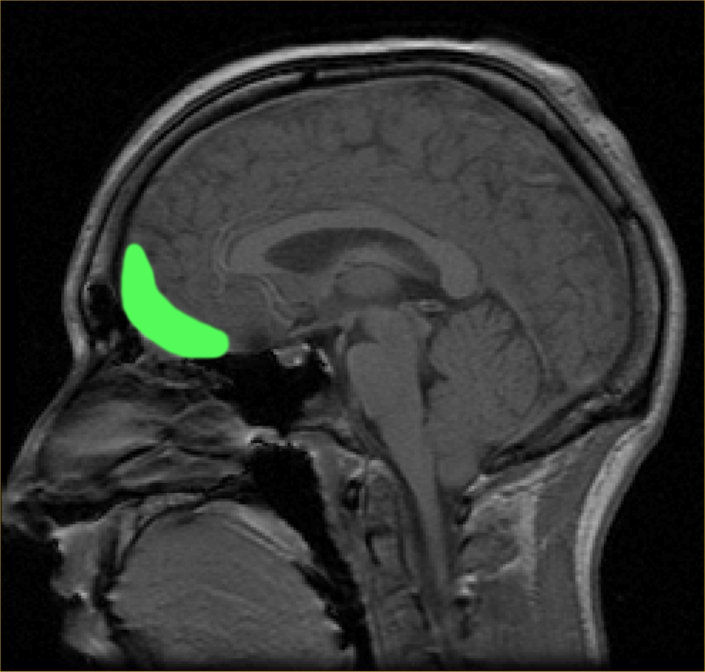 |
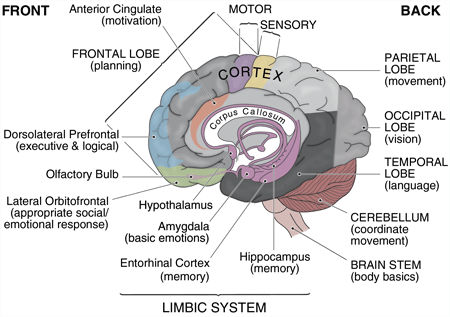 |
| MRI of orbitofrontal cortex, By Paul Wicks (2003) | The brain-basic and limbic system |
Evolution of the human brain:
The human brain evolved in three main historical stages. The
first stage is represented by the most interior and lower part
of the brain, which is the protoreptilian formation. This
part includes the basal ganglia, mid-brain, and brainstem. It
performs the basic functions of the genetically encoded
instinctual action plans, related to primitive survival issues,
such as exploration, feeding, aggression, dominance, and
sexuality.
The second stage of the human brain evolution is represented by
the paleomammalian formation, which surrounds the
protoreptalian formation. This part includes the amygdala,
hippocampus, hypothalamus and other structures in the so called
limbic system. Its main functions are the innate emotional and
motivational systems, shaping of behavioral responses to
incoming stimuli based on instincts and past experience;
mediating the social emotions, playfulness, and maternal
nurturance.
The third stage of the human brain evolution is represented by
the neomammalian formation (neocortex), which surrounds
the paleomammalian formation, constituting the largest
proportion of the brain. It performs the various functions
related to the declarative Knowledge about the world derived
especially from sight, sound, and touch.
"The degree of mushrooming of the neocortex varies widely among
mammalian species, being modest in rodents and reaching massive
proportion in the cetaceans (whales and porpoises) and great
apes (the gibbons, orangutans, gorillas, chimpanzees) and
attaining its pinnacle in humans. It is the storehouse of our
cognitive skills"
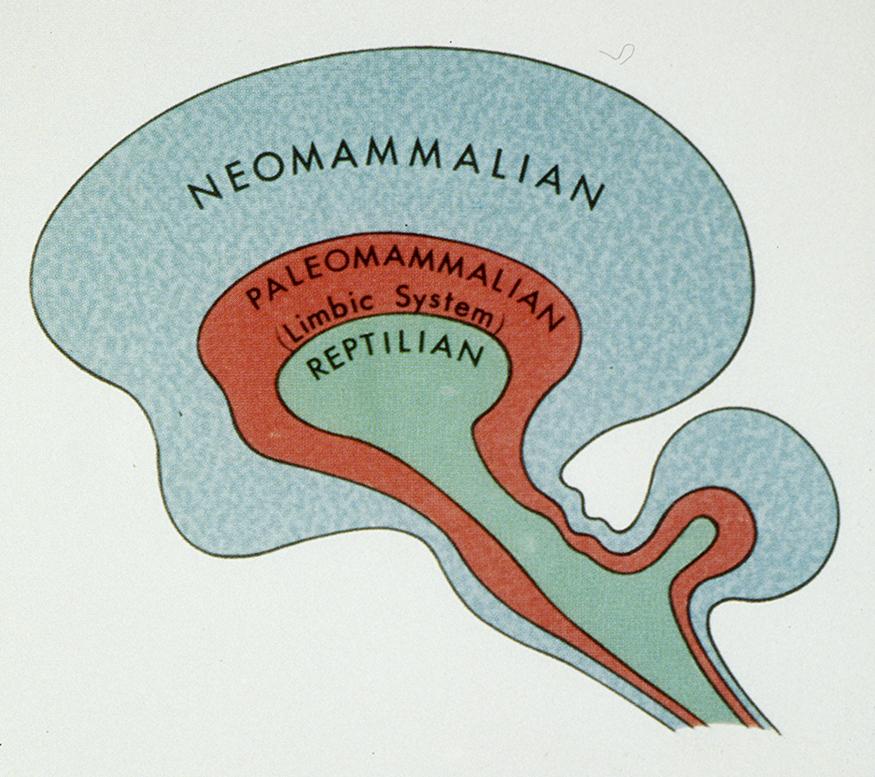 |
| Symbolic representation of the triune brain. P D MacLean (1990). |
The human brain is different from animal brains:
A microscopic study of the human brain has revealed neural structures, enhanced wiring, and forms of connectivity among nerve cells, not found in any animal, challenging the view that the human brain is simply an enlarged chimpanzee brain. The study examined eight cognitive cases of teaching, short-term memory, causal reasoning, planning, deception, transitive inference, theory of mind, and language. In all cases, the study found that similarities between animal and human abilities are small, dissimilarities large. There is no disparity between brain and mind. Thus, the mind cognition reflects the material brain capabilities (Premack, 2007). Due to a number of subtle differences between human and chimpanzee neural progenitors during cerebral cortex development, it is likely that the human neocortex expansion contributed to the remarkable cognitive abilities of humans (Mora-Bermúdez, 2016).
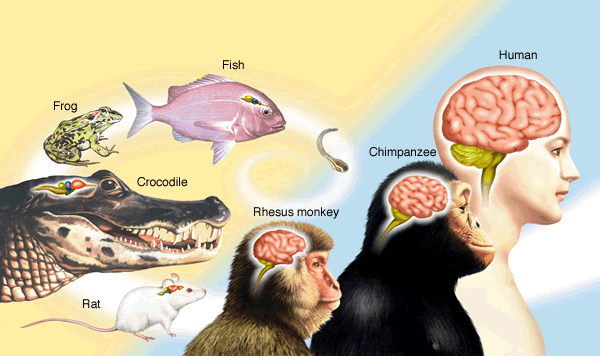 |
| Ancient origins of the cerebral cortex, Kevin Mitchell (2010) |
Anthropologists call the current human species "homo sapiens," which means the wise and the reasonable. Homo sapiens are more intelligent, more graceful, and more beautiful than the previous human species. This is evident in the large skull, facial features, and the coordination and proportionality of the human body. New discoveries in Morocco show that it lived there about 300,000 years ago but most estimates mention that this species has been living on Earth for the previous 200,000 years. In about 100,000 years ago, it started to spread to West Asia, then to East Asia, and finally to Europe when its ice glaciers started to recede (See Appendix 2 for more information).
Some researchers argue that the current species (homo sapiens sapiens) has evolved tremendously in comparison with its ancestors (homo sapiens), about 30,000 years ago. This latest evolutionary change happened basically in the brain, particularly in the necortex, which is associated with the complex thinking, distinguishing humans from other mammals. This development in the human brain led to various ways of cultural expression, such as the beautiful paintings on cave walls, depicting animals, plants, and humans. It also led later to the making of tools, weapons, and jewelry.
Thus, this is the fifth stage of creation, in which the Creator's focus was on the human brain. It is likely that Adam appeared during the past 30,000-15,000 years, when humans reached this stage of cultural expression, which enabled them to receive communication from their Creator. During that period, humans were still hunter-gatherers but they started practicing horticulture and pastoralism. However, that was well before the agricultural revolution, which started about 6.000 years ago.
Here are some links about the new homo sapien fossil discoveries in Morocco:
http://www.columbia.edu/itc/cerc/danoff-burg/invasion_bio/inv_spp_summ/homo_sapiens_sapiens.html
https://earlyhumansdiv1.wikispaces.com/Homo+Sapien+Sapien+Clothes
More illustrative video about the stages of the fetus development, with brief definitions, can be accessed at:
https://www.babycentre.co.uk/1-week-conception
See also a research paper in Arabic,
titled "Stages of the fetus and blowing of the Spirit" (أطوار
الجنين ونفخ الروح), which also includes illustrative
photos, by Abdul Jawwad Al-Sawi,
at:
[12] The opinion mentioned by the Encyclopedia Britannica, about Merneptah (1212-1202 BC) as the Exodus Pharaoh, can be accessed at:
https://www.britannica.com/topic/biblical-literature/Non-European-versions#ref597585
The two books of Maurice Bucaille, about the subject, are:
"Mummies of the Pharaohs: Modern Medical Investigations".
https://www.amazon.com/Mummies-Pharaohs-Modern-Medical-Investigations/dp/031205131X
The Bible, The Quran and Science By Maurice Bucaille
Translated from French by Alastair D. Pannell and the Author
The Joshua Mark 1250-1200 BC opinion about entry of the
Israelites to Palestine is mentioned at:
https://www.ancient.eu/canaan/
Author and source: Joshua J. Mark is a co-founder, editor, and a
director of Ancient History Encyclopedia.
https://www.ancient.eu/timeline/pharaoh/
[13] See the following article about the ironized fossils, found in the Mazon Creek area in Illinois, USA, which are displayed at the Illinois State Museum, at:
www.museum.state.il.us/exhibits/mazon_creek/about_mazon_creek.html
http://humanorigins.si.edu/evidence/human-fossils
https://www.google.com/search?q=fossilized+human+skeleton&biw0%3B336
http://www.blueplanetbiomes.org/japanese_macaque.htm.
For information about the relationship between skin color and the human migration away from the equatorial African region, see Scupin (2008: 43-45, 412-439).
https://starchild.gsfc.nasa.gov/docs/StarChild/questions/question18.html
http://www.physicalgeography.net/fundamentals/7v.html
See the following links about the egg-shape of Earth:
https://www.scientificamerican.com/article/earth-is-not-round/
http://www.answering-christianity.com/egg-shaped_earth.htm
https://www.quora.com/Why-is-planet-Earth-not-a-perfect-sphere
See the following links about the egg-shape of our solar system:
https://www.thunderbolts.info/forum/phpBB3/viewtopic.php?f=3&t=816&sid=8b34cc2c915ff5737f55bf9c266b510c===================================================================================================================
Appendix 1
The origins of Life on Earth
The story of life on Earth as told by scientists is identical to that mentioned in the above verses of the Holy Qur'an, which state that life started in wet, warm clay, where water mixed with the Earth's basic elements. This applies to the unicellular prokaryotic cells, which reproduced by division into similar pairs, through the process known as binary fission.
About 3.8 billion years ago, life began to develop on Earth. The atmosphere of early Earth included carbon dioxide, water vapor, carbon monoxide, hydrogen, and nitrogen, in addition to other elements. Life was the product of chemical interactions between the Earth elements and energy from the sun, volcanoes, wind storms, and lightening, which produced organic molecules, the necessary building blocks of life.
The first forms of life was the unicellular prokaryotes and unicellular eukaryotes. The first multicellular eukaryotes (soft-bodied animals) appeared in the ocean about 630 million years ago. This view that life started in water came out as a result of 20th century research conducted by the Russian A. I. Oparin, the Scottish J. B. S. Haldane, and the Americans Stanley Miller and Harold Urey.
Other researchers hypothesized that "early polymerizations leading to the origin of life may have occurred in cracks in the deep ocean floor where hot water, carbon monoxide, and minerals such as sulfides of iron and nickel spew forth. Such hydrothermal vents would have been better protected than Earth's surface from the catastrophic effects of meteorite bombardment. Today, these hot springs produce precursors of biological molecules and energy-rich food, including the highly reduced compounds, hydrogen sulfide and methane."
A different hypothesis about how life started on Earth indicate that life's chemical building blocks (organic polymers) "may have formed and accumulated on rock or clay surfaces, rather than in the primordial seas. Clay, which consists of microscopic particles of weathered rock, is particularly intriguing as a possible site for early polymerizations, because it binds organic monomers and contains zinc and iron ions that may have served as catalysts. Laboratory experiments have confirmed that organic polymers form spontaneously from monomers on hot rock or clay surfaces" (Solomon, Berg, Martin, 2006: 385-387).
The accumulation of organic molecules led to the formation of the protobiont simple pre-cells. But "how pre-cells evolved into living cells remains to be solved." Understanding molecular reproduction provides us with some clues.
Biologists found that genetic information in living cells is stored in the nucleic acid DNA, which is transcribed into messenger RNA, which is translated into the proper amino acid sequence in proteins. Of special importance is the fact that both DNA and RNA can form spontaneously on clay and are capable of self-replication. However, biologists hypothesize that RNA existed on Earth before DNA. So, the self-replicating genetic code, forming on clay, was the link between organic molecules and living cells (Solomon, Berg, Martin, 2006: 388-389).
Then, the genetic information stored in DNA molecules is replicated and passed to new cells during cell division (Solomon, Berg, Martin, 2006: 2, 66). One example of such cell division is the binary fission of prokaryote reproduction (Solomon, Berg, Martin, 2006: 446). This is a process in which one cell divides into two similar cells, as illustrated by the division of bacterium Streptococcus pyogenes photograph on page 435 of Solomon, Berg, Martin (2006: 436).
The oldest fossil cells that are widely accepted are 2 billion years old. However, microfossils discovered in Greenland indicate that there were living prokaryotic cells about 3.8 billion years ago. These cells got their energy supplies from available organic molecules. Getting energy from sun light needed a mutation. Getting hydrogen by splitting water needed another mutation and a longer time, which was the case with cyanobacteria. These were the photosynthetic organisms, which existed about 3.1 to 3.5 billion years ago.
By 2 billion years ago, cyanobacteria had produced enough oxygen to change the Earth's atmosphere in two major ways. First, new aerobic organisms (aerobes) adapted to the availability of oxygen and used it in more effective production of energy. These organisms produced oxygen and carbon dioxide regularly, which allowed oxygen to continue in existence as a stabilized and renewable element necessary for more efficient production of energy in the biosphere. Second, formation of accumulated oxygen layers in the upper atmosphere formed the ozone layer, which protects inhabitants of Earth from the harmful ultraviolet radiation from the sun (Solomon, Berg, Martin, 2006: 389-391).
================================================================================================================
Appendix 2
Stages of the human departure from the ape family
There is no agreement among paleoanthropologists on one theory about the evolution of humans and their departure from their closest relatives, the chimpanzees (as humans share 99% of their DNA with them), in the ape family. However, the competing hypotheses agree on major facts on the basis of the archaeological, particularly fossil, record. Here are the main features of components of these working hypotheses:
I. Sahelanthropus Tchadensis, which was discovered in 2002, indicates a hominid origin dating back to 6-7 million years ago (mya), with some main differences from chimpanzees in the form of a flatter face, different teeth, and a larger brain. However, there is no evidence of walking upright, which is "a hallmark characteristic of hominids," as Verse 82:7 above states.
II. Australopithecines, which include seven main species.
1. Ardipithecus Ramidus, which dates back to about 5.8 - 4.4 mya.
2. Australopithecus Anamesnsis, which dates back to about 4.2 - 3.9 mya, had a mixture of human-like and apelike features. Back teeth and jaws larger than those of chimpanzees, front teeth smaller, was bipedal having an upright posture, the first marked human evolution from the ape family.
3. Australopithecus Afaresnsis, which dates back to about 4 - 3 mya, the common ancestor of the extinct A. Rubustus and the A. Africanus, had relatively small brain, pronounced supraorbital ridges, a jutting jaw, and a large canine teeth. No evidence of making tools or fire.
4. Australopithecus Africanus, which dates back to about 3 - 2.4 mya, walked erect, had human-like hands and teeth, ate both plants and animals, had smaller brain than that of present humans but much like that of its primate ancestors.
5. Australopithecus Aethiopicus, which dates back to about 2.5 - 2.2 mya, the ancestor of the Robustus and
Boisei extinct branches.
6. Australopithecus Robustus, which dates back to about 2 - 1.4 mya. Some researchers classify the extinct
A. Robustus in a separate genus, Paranthropus.
7. Australopithecus Boisie, an extinct species which dates back to about 2.2 - 1.1 mya.
Summary of the main characteristics of A. Aethipicus, A. Rubustus, and A. Boisie:
These are "larger than A. Africanus and have extremely large molars, very powerful jaws, relatively small brains, and heavy skull crests. Most females lacked the skull crests and had substantially smaller jaws, another example of sexual dimorphism in early hominids. The teeth and jaws suggest a diet, perhaps of tough roots and tubers, that would require powerful grinding. These so-called robust australopithecines may or may not be closely related but are generally thought to represent evolutionary offshoots, or side branches , of human evolution" (Solomon, Eldra P., Linda R. Berg, and Diana W. Martin, 2006: 412).
III. Homo Habilis, which dates back to 2.3 - 1.6 mya, the first hominid to have enough features of the same modern human genus. It was small, with a larger brain and smaller premolars and molars than australopithecine. It left behind sites with primitive tools, stones with sharp edges for cutting and scraping, pebble choppers and flakes. Some researchers argue for classifying it more as australopithecus than as homo.
IV. Homo Ergaster, which dates back to 2 - 1.4 mya, the African ancestor of both Homo Erectus and Homo Heidelbergensis. Thus, it is the ancestor of modern humans.
V. Homo Erectus, which dates back to 1.7- 0.2 mya, is believed by some researchers as the east Asian offshoot of homo ergaster. Many researchers argue that it apparently evolved from homo habilis but it was taller, had a larger brain which kept getting larger. However, it retained some ape characteristics like the heavy suprorbital ridge and projecting face. It was the first hominid to have fewer differences between the sexes. It made more advanced stone tools, known as Acheulean tools, including hand axes, choppers, borers, and scrapers. It lived in northern colder areas, scavenged, hunted, wore clothes, built fire, lived in caves or shelters, and used spears as weapons. Some researchers argue that it went extinct in its east Asian region when more recent humans arrived later. However, there is no consensus on this argument.
VI. Homo Heidelbergensis, which dates back to 800 -100 thousand years ago, the ancestor of both Homo Neanderthalensis and Homo Sapiens. Some researchers call it as archaic Homo Sapiens.
VII. Homo Neanderthalensis, which dates back to 230 - 30 thousand years ago, now extinct. This species lived in Western Asia, then proceeded to Europe as ice glaciers covering the continent receded northward. These early humans, Neanderthals, had short, sturdy builds. Their faces projected slightly, their chins and foreheads receded. They had heavy supraorbital ridges, and jawbones, and their brains and front teeth were larger than those of modern humans. Their nasal cavities were large (in adaptation to the European ice age), and their cheekbones were receding.
There is no consensus among researchers that Neanderthals were a separate species from Homo sapiens. They had more sophisticated (Mousterian) tools than H Erectus, like pointed spears, with which they hunted large animals. They had advanced social cooperation, rituals, and religious beliefs, as evidenced in burials.
About 30,000 years ago, Neanderthals disappeared from the archaeological record. Some researchers argue that they were outcompeted or exterminated by the more efficient Homo sapiens. Support for this hypothesis comes from analysis of the mitochondrial DNA of Neanderthal bones, which showed them as an evolutionary dead end, that did not interbreed with more modern humans.
This hypothesis was challenged by another, based on discovering a skeleton of a 4-year-old child in Portugal, which dates back to 24,500 years ago. The skeleton showed mixed features of both humans and Neanderthals (short lower limb bones). Researchers following this hypothesis argue that there was interbreeding between the two species. However, others still disagree saying that the child represented a normal variation in the human species.
VIII. Homo Sapiens, modern humans, appeared about 100 thousand years ago in Africa and the Middle East. By about 30,000 years ago, Homo sapiens became the only remaining members of genus Homo. Their skull lacked a heavy brow ridge and had a distinct chin.
There are two competing hypotheses about the origin of modern Homo sapiens.
The first is called out-of-Africa, through which researchers argue that Homo sapiens originated in Africa about 200,000 - 100,000 years ago, then spread to the Middle East, Asia, then to Europe.
The second is the multi-regional hypothesis, on the basis of which researchers argue that Homo Erectus spread around the world, then geographical isolation allowed evolution to modern humans. These groups continued to interact and interbreed with one-another, which prevented a complete reproduction isolation, but leading to the present day human regional variations.
Both hypotheses draw support from studies about fossils, molecular biology, and population genetics.
Source: Solomon, Eldra P., Linda R. Berg, and Diana W. Martin (2006: 409-416).
Images from the Smithonian Institute:
http://humanorigins.si.edu/evidence/human-fossils/species
===========================================================================================================
Fossils in Ironstones (Appendix to Foot Note 13):
Images of human fossils in ironstones:
http://humanorigins.si.edu/evidence/human-fossils
https://www.google.com/search?q=fossilized+human+skeleton&biw0%3B336
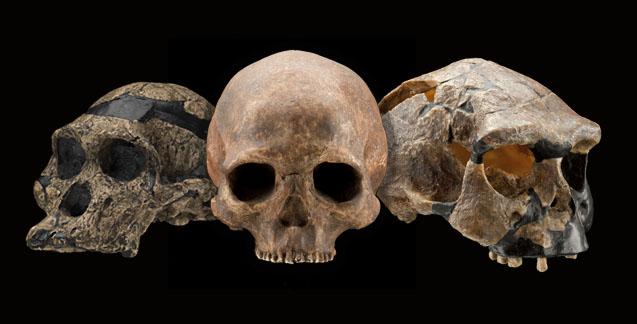 |
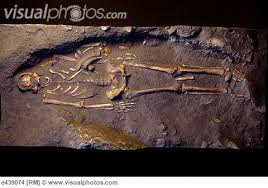 |
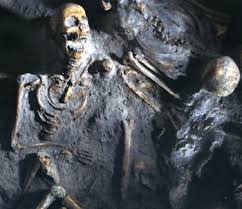 |
Article about fossils in ironstones:
http://www.museum.state.il.us/exhibits/mazon_creek/about_mazon_creek.html
Images of animal fossils in ironstones:
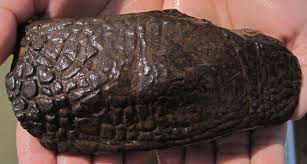 |
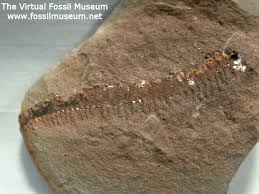 |
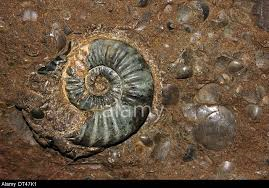 |
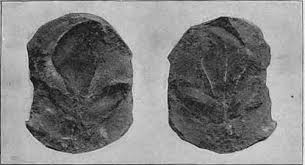 |
Distribution of rainfall and vegetation in the world.
A - Tropical Moist Climates: all months have average temperatures above 18° Celsius. Abundant rain and
vegetation.
B - Dry Climates: with deficient precipitation during most of the year, leading to least vegetation.
C - Moist Mid-latitude Climates with Mild Winters, leading to more rainfall and more vegetation.
D - Moist Mid-Latitude Climates with Cold Winters.
E - Polar Climates: with extremely cold winters and summers, which makes human life least possible despite the
availability of water and vegetation .
-
7(v) Climate Classification and Climatic Regions of the World
Apr 16, 2008 ... When studying about the Earth's Climatic Regions as described below, use this animation (Figure 7v-1) as a guide to understanding the large ...
www.physicalgeography.net/fundamentals/7v.html - 143k - Cached - Similar pages -
World Climates
Köppen divided the Earth's surface into climatic regions that generally coincided with world patterns of vegetation and soils. The Köppen system recognizes ...
www.blueplanetbiomes.org/climate.htm - 46k - Cached - Similar pages -
Image results for climatic regions
- Report imagesReport
the following images as offensive. Confirm CancelThank you for the feedback.
Physical Geography: Climatic Regions
Climate Regions. Modified Koppen Classification System. Our textbook uses the Koppen classification of world climates
The Egg-Shaped Earth:
-
Voyager pictures reveal Solar System is egg-shaped - Telegraph
Jul 2, 2008 ... Solar system is egg-shaped. Artist's rendering of Voyager 2 at the ... data back to Earth, long after their original missions ended. ...
www.telegraph.co.uk/scienceandtechnology/science/sciencenews/3346213/Voyager-pictures-reveal-Solar-System-is-egg-shaped.html - Similar pages
=======================================================================================================================
References:
Allen, JS; Damasio H; Grabowski TJ. 2002. "Normal neuroanatomical variation in the human brain: an MRI-volumetric study." Am J Phys Anthropol. 118 (4): 341–58.
https://www.ncbi.nlm.nih.gov/pubmed/12124914
Allman, John. 2000. "Evolving Brains." Scientific American Library, W.H. Freeman, updated by Sarah Neena Koch (2011):
Al-Qurtubi (Muhammed Bin Ahmed Bin Abi Bakr Bin Qaz'h) was born in in the first decade of 7th Hijri Century, in Qurtuba, Andalusia, and died in Minyat Bani Khaseeb, South Egypt, in 671 Hijriya. His famous work containing an interpretation of the Holy Quran is titled, "Tafseer Al-Qurtubi."
Al-Tabari (Abu Ja'far Muhammad Bin Jarir) was born in Amol, Tabaristan, of today's Iran, in 224 Hijriyah, 840 Gregorian, and died in Baghdad, in Iraq today, in 310 Hijriyah, 923 Gregorian. He is most known for his famous interpretation of the verses of the Holy Quran, titled as "Jāmi` al-bayān fi ta'wīl āy al-Qurān," popularly known as "Tafsīr Al-Ṭabarī" (Al-Tabari's Interpretation), which took him seven years to finish, from the year 283 until 290 Hijriya.
Bin (Ibn) Katheer (Abu Al-Fida, Issma'il Bin
'Omar) was born in Majdal, Bussra, South of Syria, in 700
Hijriya but he lived, was educated, and died in Damascus, in
774).
He is most famous for his work of interpreting the
Holy Quran titled, "Tafseer al-Quran Al-'Atdheem," more known as
"Tafseer Bin Katheer."
Brown, Graham; Fairfax, Stephanie; Sarao, Nidhi.
"Human Evolution". Tree
of Life. Tree of Life Project.
http://tolweb.org/treehouses/?treehouse_id=3710
MacLean, Paul. 1990. "The Triune Brain in Evolution: Role in Paleocerebral Function." Plenum, New York. A summary by Sarah Neena Koch at:
http://mybrainnotes.com/evolution-brain-maclean.html
Mora-Bermúdez, Felipe et al. 2016. "Differences and similarities between human and chimpanzee neural progenitors during cerebral cortex development." NCBI, Volume 5.
https://www.ncbi.nlm.nih.gov/pmc/articles/PMC5110243/
Pascual, Leo et al. 2013. "How does morality work in the brain? A functional and structural perspective of moral behavior." Frontiers in Integrative Neuroscience, 7: 65.
https://www.ncbi.nlm.nih.gov/pmc/articles/PMC3770908/
Premack, David. 2007. "Human and animal cognition: Continuity and discontinuity." Proc Natl Acad Sci U S A. 2007 Aug 28; 104(35): 13861–13867.
https://www.ncbi.nlm.nih.gov/pmc/articles/PMC1955772/
Quran, The Holy, the Arabic text and English translations, particularly those of Sahih International and Yusuf Ali, published at http://tanzil.net/#1:1 and www.quranexplorer.com.
Sapolsky, Robert M. 2005. "Monkeyluv and Other Essays on Our lives as Animals." Scribner, New York.
Scupin, Raymond. 2008. "Cultural Anthropology: A Global Perspective." 7th Edition. New Jersey: Person, Printice Hall.
(This is a textbook used in teaching Cultural Anthropology on the college level all over the United States. It's a survey of research in the field).
Smithonial Institution. 2018. "Human Characteristics: Brains." Human Origins.
http://humanorigins.si.edu/human-characteristics/brains
Solomon, Eldra P., Linda R. Berg, and Diana W. Martin. 2006. "Biology." 7th Edition. Belmont, CA: Books/Cole-Thomson.
(This is a major biology textbook used in teaching biology on the college level all over the United States. It's a comprehensive survey of research in the field).
Wicks, Paul. 2003. "MRI of orbitofrontal cortex: Approximate location of the orbitofrontal cortex." Wikimedia.
https://commons.wikimedia.org/wiki/File:MRI_of_orbitofrontal_cortex.jpg
=======================================================================================================================
About the
Author and the Book:
* The author of this book
has a Ph.D. in Sociology and a Master’s degree in Cultural Anthropology.
He was born in Gaza, Palestine, in 1369 Hijriya (1950), but he has been
living in the United States since 1986.
The authentic Quran Arabic text is used as a
reference for the translation of the meanings of the Quran verses,
particularly from
www.tanzil.net.
The works of the
three renowned Islamic scholars Al-Tabari, Al-Qurtubi, and Ibn Katheer,
have been used throughout the chapters of this book, as these are the
most credited interpretations of the Holy Quran, for their use of
'Hadith, companions' interpretations, and their thorough knowledge of
the Arabic language.
يُرِيدُونَ لِيُطْفِئُوا نُورَ اللَّـهِ بِأَفْوَاهِهِمْ وَاللَّـهُ
مُتِمُّ نُورِهِ وَلَوْ كَرِهَ الْكَافِرُونَ
(الصف ، 61: 8).
They want to extinguish the light of Allah with their mouths, but Allah will perfect His light, although the disbelievers dislike it (Al-Saff, 61: 8).
